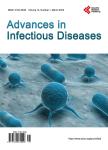Assessment of Knowledge, Attitude and Practices among Healthcare Workers in a Tertiary Care Hospital on Needle Stick Injury
Assessment of Knowledge, Attitude and Practices among Healthcare Workers in a Tertiary Care Hospital on Needle Stick Injury作者机构:Department of Microbiology Government Medical College & New Civil Hospital Surat India
出 版 物:《Advances in Infectious Diseases》 (传染病进展(英文))
年 卷 期:2024年第14卷第2期
页 面:487-495页
学科分类:1006[医学-中西医结合] 1005[医学-中医学] 100502[医学-中医临床基础] 10[医学] 100602[医学-中西医结合临床]
主 题:Needle Stick Injury Knowledge Attitude Practice Healthcare Workers
摘 要:Purpose: Needle-stick injury (NSI) is one of the most potential occupational hazards for healthcare workers because of the transmission of blood-borne pathogens. As per recent data, around 30 lakh healthcare workers sustain Needle stick injuries each year. This study was conducted to assess healthcare workers’ knowledge, attitude and practices regarding needle stick injury. Materials & Methods: A cross-sectional study was conducted in a Tertiary Care Hospital over the period of 3 months. The study population consisted of Intern Doctors, Post Graduate resident Doctors, Staff Nurses, laboratory technicians of Government Medical College and New Civil Hospital, Surat (n = 300). The data were collected using a self-administered questionnaire via the means of Google Forms. Questionnaire was made with prior review literature. The data obtained were entered and analysed in Microsoft Excel. Results: The prevalence of NSI in our study was 46%, with a higher prevalence among the PG residents (72%). Overall scores regarding knowledge and attitude were better in PG residents (knowledge score 7 in 71% and Attitude Score 7 in 68% of PG Residents). Even though the PG residents scored highest in the knowledge category, the majority of them suffered needle stick injuries as a result of poor practice scores. Among those who had NSI (n = 139/300), 70% of study participants had superficial injuries, only 9% reported the incident, 18% got medical attention within 2 hours of the incident, and 7% followed up to recheck their viral markers status. Most incidents of NSI were due to hypodermic needles while recapping needles. Conclusion: Exposure to needle stick injuries and their underreporting remains a common problem. It is imperative that healthcare workers receive regular training on the proper handling of sharp objects. We can also draw the conclusion that preventing NSIs requires putting knowledge into practice.



